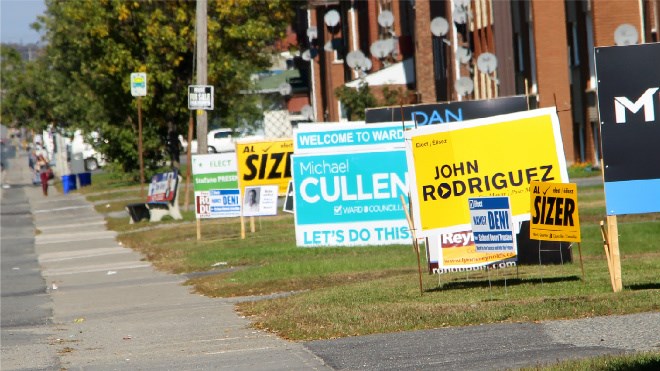While polls are normally a fairly reliable gauge of public opinion, in recent years some shocking election-day results have defied pollster predictions.
The most notable examples in recent Canadian history are out west – Christy Clarke's 2013 victory in British Columbia, and Allison Redford's victory in Alberta in 2012. In both cases, polls had them losing, yet on election day, both came away with majority governments.
So what's going on? Paul Seccaspina of Oraclepoll Research, says the proliferation of IVR polling – better known as robocalls – is playing a part in the skewered polls.
Seccaspina conducted three opinion polls for Northern Life in the current municipal election, using live interviews with respondents. He says it's still the most accurate way to find out what's on people's minds.
“You never know what is going to happen on election day,” he said. “But as pollsters, what we can do is analyze trends. And that's what we do.”
Live interviews are more reliable than the robocalls, he said, for a few reasons. One, robocalls force respondents to wade through a long list of candidates to get to their preferred choice. That opens up the poll to manipulation, he said.
“It makes a difference when you have one person in the front end, then put in the fringe candidates in the middle, and then the other mainstream candidates at the end,” Seccaspina said. “When they hear the recorded messages, it turns people off.”
The automated calls also eliminates some key sectors of municipal voters, especially seniors, who won't press buttons or have more trouble navigating the responses. And since voters have to go through so many mayoral candidates, ones placed higher on the list do better because people get impatient and start pressing buttons.
“So the IVRs are all over the map. They change from week to week and they fluctuate wildly.”
He was specifically referring to a poll conducted by Prime Contact on the Sudbury race. That poll, like Seccaspina's, found Brian Bigger to be well out in front in the mayor's race, with John Rodriguez in second and Dan Melanson in third.
The firm says it did the poll as “a public service” and has no ties to any candidates “at the time of this release.” It says 1,085 voters were called between 4:24 and 8:47 p.m. on Oct. 9. The firm says that sample size is considered accurate within three per cent, 19 times out of 20.
But the firm concluded that Melanson was a distant third, and that 15 per cent were undecided. In Seccaspina's polling, Melanson was second. The biggest difference, however, was the size of the undecided vote: Prime Contact pegged it at 15 per cent, while Seccaspina had undecided at about 34-38 per cent.
The poll also got Melanson's name wrong, calling him 'Don Malasian.' Would that make a difference?
“You're damn right it does,” Seccaspina said.
Repeated messages to Prime Contact spokesman James Collins seeking an interview on this story were not successful. However, in the release sent with the Prime Contact poll, president Josh Justice was quoted as saying the election is now Bigger's to lose.
“I would take a large misstep at this point for Bigger to lose this substantial lead,” Justice said in the release.
Voters go to the polls Oct. 27 to elect a new mayor, at least six new city councillors, plus a slate of school board trustees. Online voting runs until Oct. 24.
Join Sudbury.com+
- Messages
- Post a Listing
- Your Listings
- Your Profile
- Your Subscriptions
- Your Likes
- Your Business
- Support Local News
- Payment History
Sudbury.com+ members
Already a +member?
Not a +member?
Sign up for a Sudbury.com+ account for instant access to upcoming contests, local offers, auctions and so much more.
